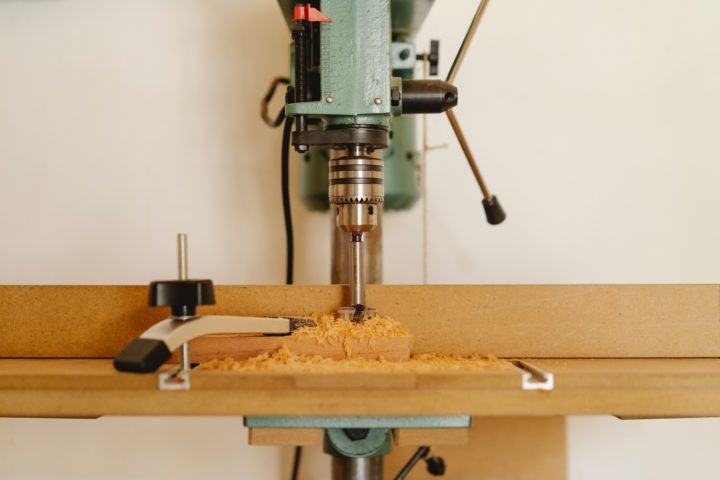The following contribution is from another author.
The radial drill press has mounted on a vertical column that has the motor and other components. The bench below the drill is mobile. The oscillating drill has a column that has a sliding motor and a radial arm. The arm can rotate around the body as well as go up and down.
A carpenter handling a bit of light metalwork will find it beneficial when using the two types of drills because of the varying demands that require specific force or technique that only one can offer. For instance, the radial drill has a maximum output of 1 horsepower while the oscillating drill can produce higher speeds producing 3,000 rotations per minute. Despite the power, they are only suitable for smaller drills.
You may also like to check out this post: https://drillingadvisor.org/best-drill-press-under-200/, to know more about drill press below $200.
The Differences
Oscillating Drill Press
The oscillating drill takes its name from the way its head is mounted. The head sits on top of a pole, usually measures 4-inches in diameter. The pole stands on the floor, giving the impression of a drill mounted on a pillar. Most drilling work takes place on the stand next to the pillar.
You can convert an oscillating drill press that can work during sanding operations by converting it in a matter of seconds. The oscillation from the drill reduces heat buildup leaving a smooth finish during the sanding phase.
The oscillating drill press can through almost anything. The workspace has a table making the drilling exercise a safe activity. The item on the table should be on a clamp when drilling if the drill slides back to you.
The drill has preset settings on drilling depths and drilling speed, making the drilling process safer and seamless. The settings are done concerning the material you are planning to drill.
Radial Drilling Press
The radial driller stands on a large column that is more than is slightly over one foot in diameter. The dimensions are similar even for small drills. For large radial drills, the diameter can reach 30 inches for the column. The column has an arm capable of rotating 360-degrees. Its name comes from the rotating arm.
The arm on the radial drill has a rail where the drill head is mounted for you to swing the arm; you can also create a casting on the ground, and then bring the arm back to its original position. In case you need a table, use the special metal boxes to give you an elevated working space. The nature of movement for the radial drill assumes a square shape. The smaller drills have a maximum tendency of 4 feet along the rail. Larger drills with a column going up to 10 feet have an additional column of about 15 feet tall.
The radial drill can produce a head force of 5 to 50 horsepower on small machines. The drills can be 4 inches and above. The smaller tools exert great pressure with gears reaching not more than 1,000 rotations per minute. They have longer spindles that enable them to drill lengths of up to 20 inches, which applies to smaller radial drills.
As the machine size increases the spindle, the length becomes bigger. Radial drills have automatic feeders, which can stop after pressing the stop levers. The drills may have coolant pumps that it can use to push the cooling fluid through smaller channels. The coolant is available only on large radial drills.
Why Using a Drill is Relevant
- A drilling machine has the primary role of making holes on materials or walls for mounting purposes. You may want to mount light fixtures, picture frames, or even use it on jewelry and large-scale metalwork on an industrial scale.
- The relevance of drilling in your life is seen by the different designs available in specific industries. Such drills do not support many applications, but they save your time, and planning starts as soon as construction ends.
- Drills have a design to make them comfortable for use in longer projects. The outer casing withstands the pressure that comes with the drilling experience. Some have lubricant pumps that make it possible to prolong the drill’s life.
Final word
These two drilling devices may be functionally different but do an almost similar work only that one produces more power making it suitable for hard materials. Their precision to bore holes in difficult to reach places makes them the only tools you can use for such tasks. The wide variety of functions the drills can perform. The recommendation would be to have the experienced professionals should handle the tools. The devices perform some specialty tasks, which is a contrast to its compact nature. When you visit a store, it is important to know individual differences to get the exact drill you want for that specific task.
















